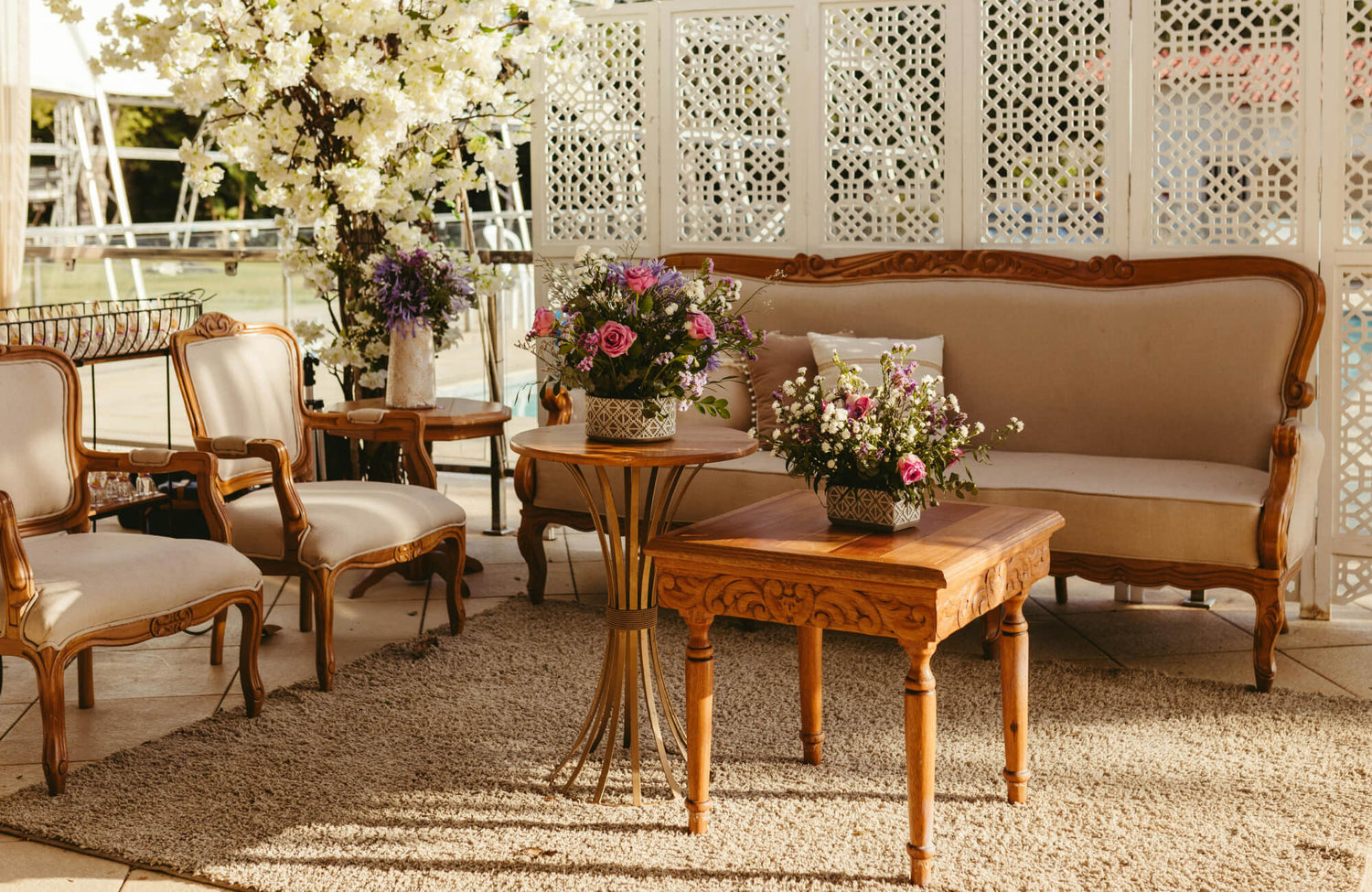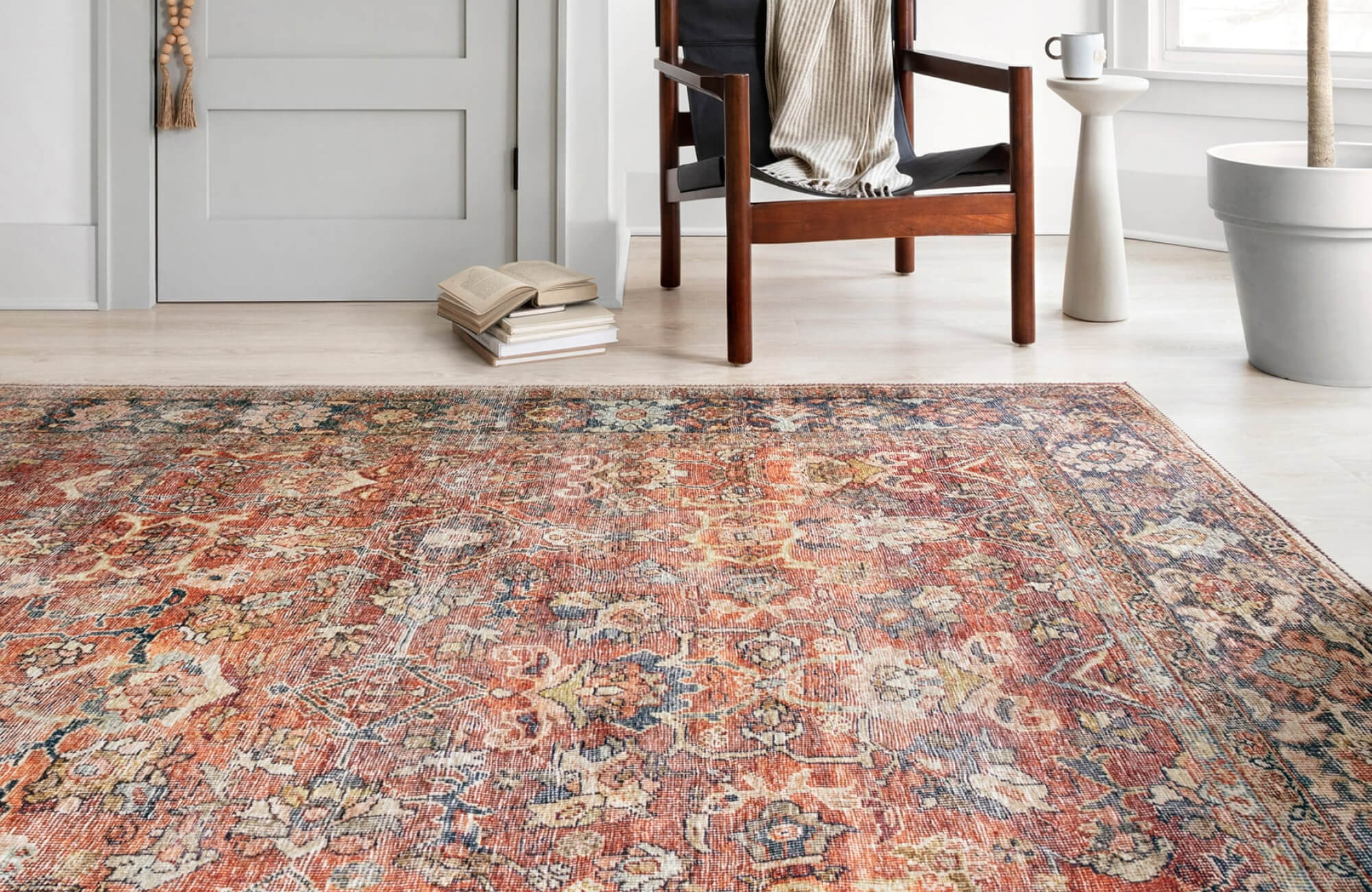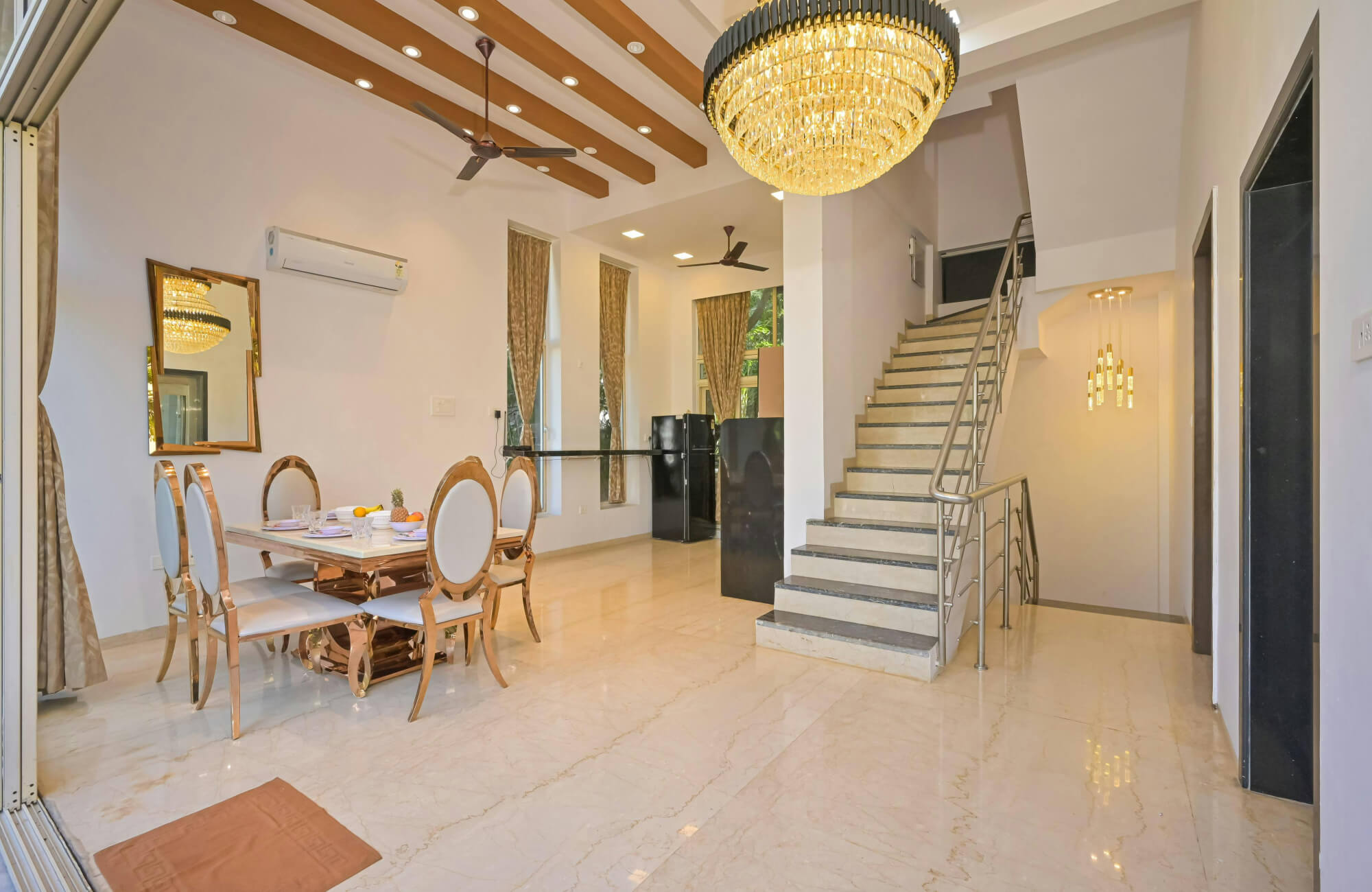Polypropylene rugs are often praised for their durability and affordability, but their true value involves more than just a low price tag. This guide takes a closer look at the key factors that influence cost, including manufacturing methods, design complexity, lifespan, and environmental impact to offer a well-rounded perspective. By weighing the benefits alongside potential trade-offs, you’ll be better equipped to decide if polypropylene rugs align with your style, values, and budget.

Understanding the Baseline Cost of Polypropylene Rugs
Polypropylene rugs are generally more affordable due to their streamlined manufacturing process and cost-efficient materials. However, size and shape variations can significantly influence final pricing, depending on production complexity and material usage.
Material Composition and Manufacturing Impact
Polypropylene is made using an efficient extrusion process that melts resin pellets into strong, uniform filaments. Once heat-set, these fibers become dimensionally stable, durable, and ideal for mass production. The manufacturing process is highly automated and less labor-intensive compared to natural fibers like wool, which require multiple steps including shearing, cleaning, carding, and spinning. Additionally, propylene, the base material, is a byproduct of petroleum refining and is readily available, further reducing material costs.
This thermoplastic polymer is known for its low melting point, around 160°C, which allows for energy-efficient production cycles and rapid cooling, both of which contribute to lower operational costs. Manufacturers also benefit from the polymer's high yield during fiber extrusion, producing more linear feet of yarn per pound of material compared to cotton or wool. The result is a synthetic rug that is both cost-effective to produce and widely accessible.
This combination of efficient raw materials, automated production, and high fiber yield ultimately results in a cost-effective product for consumers. As a result, machine-made polypropylene rugs in basic sizes and patterns typically range from $30 to $200, depending on fiber density and backing materials. Hand-tufted polypropylene options, on the other hand, start around $150 and can exceed $500 when paired with thicker piles or intricate surface treatments.
Size and Shape Variations and Price Points
Standard rectangular rugs are produced with high efficiency, making them more affordable. In contrast, custom shapes and oversized rugs require manual setup, specialized equipment, and more material, leading to higher prices. Runners, while smaller in size, may become costly when several are needed to span large areas. Complex shapes often involve advanced programming and greater waste, adding to labor and production expenses. Buyers can expect more predictable pricing with standard sizes, while custom options will naturally carry a premium.
Large-format looms used for oversized rugs must be recalibrated for each non-standard dimension, which increases machine downtime and reduces overall productivity. Irregular shapes also lead to more offcuts and waste material, which manufacturers often factor into pricing to recover costs associated with lower material efficiency. These variables can drive noticeable price differences even among rugs made from the same base material.
Edward Martin’s Broderick Polypropylene Pile Rug in Cream / Rust, as displayed in the picture above, is a strong example of this pricing range. Available in multiple sizes from small accent rugs to oversized rugs or grand-scale area rugs, it reflects how cost scales with format, yet remains competitively priced across the board, thanks to efficient construction and standardized shapes.
With examples like Broderick, it’s clear how format impacts affordability. Expect to pay between $80 and $200 for standard mid-size polypropylene rugs, while larger sizes often range from $200 to $600. Custom shapes or oversized pieces typically start around $600 and rise depending on the design's intricacy and material demands.

Longevity and Maintenance Costs Over Time
While polypropylene rugs have a lower upfront cost, their durability and ease of care significantly reduce long-term maintenance expenses. This makes them a practical investment for homeowners seeking value over time. To ensure maximum lifespan and continued performance, it’s best to follow the manufacturer’s care instructions, including recommended cleaning methods and usage guidelines.
Durability and Resistance to Wear and Tear
Polypropylene fibers are naturally moisture-resistant and stain-repellent, allowing them to hold up well in areas exposed to spills, humidity, or dampness. This hydrophobic quality helps prevent mold and mildew from developing, making polypropylene rugs especially suitable for basements, kitchens, and other moisture-prone spaces. In addition, solution-dyed fibers provide superior fade resistance, retaining color even after repeated cleaning or sun exposure. These rugs also perform well under consistent use, as the fibers resist flattening and wear. For those seeking even greater longevity, high-density constructions provide added durability by increasing the number of fibers packed into each square inch, enhancing both structure and surface resilience.
Cleaning and Maintenance Expenses
Polypropylene rugs are remarkably easy to maintain, requiring only standard household products for routine care. Their non-absorbent fibers help prevent stains from setting in, making spot cleaning with water and mild detergent both quick and effective. For everyday upkeep, regular vacuuming is usually sufficient, while occasional steam cleaning can be performed without risking damage to the fibers. Unlike many natural materials, polypropylene is also less likely to retain odors, contributing to a fresher environment over time. With fewer cleaning demands and no need for specialized treatments, these rugs offer noticeable long-term savings on maintenance costs.

Design and Aesthetic Considerations Affecting Price
Design elements like pattern intricacy and brand influence play a major role in pricing, often adding premium costs to even budget-friendly materials. The final cost reflects not just the look of the rug, but the labor, technology, and brand identity behind it.
Pattern Complexity, Weaving Techniques, and Material Blends
The complexity of a rug’s pattern and the technique used to weave it can have a significant impact on overall cost. More intricate designs and multi-color combinations require precise machinery and slower production speeds, both of which contribute to higher prices. Each additional color demands a dedicated yarn feed, increasing both material use and programming time.
Power-loomed polypropylene rugs are among the most common machine-made options and offer an efficient, cost-effective solution for producing detailed patterns at scale. While generally more affordable, even power-loomed styles can become pricier when incorporating features like loop piles, high-low textures, or dense constructions. These added elements require more material and longer run times, which affect both efficiency and cost. Blending polypropylene with other synthetic fibers, such as polyester, can also raise the price slightly, especially when the goal is to enhance softness, pattern clarity, or sheen.
One example is the Charlise Polypropylene & Polyester Pile Rug in Bone / Denim, as shown in the photo above, which showcases how this blend supports intricate patterning and a smoother finish. Its power-loomed construction enables the precision needed for its ornate medallion and floral border, creating a refined look that mimics traditional hand-knotted styles at a more accessible price point.
For more premium finishes, hand-tufted polypropylene rugs involve skilled manual labor using tufting guns and shaping tools to create texture and dimension. Although made from synthetic fibers, these rugs often emulate the look of high-end wool or silk pieces, which justifies a higher price point.
Jacquard and Axminster looms, typically reserved for highly intricate patterns, demand extensive pre-programming to control individual yarn movements. This level of detail reduces output per hour and increases labor involvement, pushing production costs even higher. As a result, polypropylene rugs with elaborate designs or specialized textures tend to fall between $150 and $400, depending on the density, weaving technique, and complexity of the design.
Brand Recognition and Designer Collaborations
Rugs from established brands tend to carry a price premium due to perceived quality and reliable service. Designer collaborations, particularly limited-edition pieces, often feature exclusive designs and color palettes that appeal to buyers seeking originality. These collections also involve significant marketing efforts, from photography to influencer campaigns, all of which contribute to the retail price. The appeal of status and style often justifies the higher cost, especially when paired with limited distribution. While the material may be the same, the brand story can shift the rug into a different pricing tier.
Some collaborations involve proprietary color technologies or exclusive fiber blends, which increase both production complexity and licensing costs. Additionally, branded polypropylene rugs often include elevated packaging, in-store displays, and warranty programs that further distinguish them from generic options in the same material category. Branded or designer polypropylene rugs generally start around $300 and can exceed $800, depending on exclusivity, licensing, and perceived brand value.

Environmental and Ethical Considerations Impacting Value
Polypropylene rugs come with environmental drawbacks due to their synthetic nature, but recent advancements and consumer awareness are shaping new preferences. Ethical labor practices also influence perceived value, especially among socially conscious buyers.
Environmental Impact of Polypropylene Production
Polypropylene is a plastic derived from fossil fuels, and its production contributes to greenhouse gas emissions and plastic waste. Unlike natural fibers, it does not biodegrade, meaning discarded rugs can persist in landfills for centuries. Chemical additives used during manufacturing can also pose environmental concerns. Although some manufacturers are introducing recycled polypropylene, the majority of products still use virgin material. For eco-conscious buyers, these environmental factors may outweigh the cost savings.
The energy required to produce polypropylene is lower than that of nylon or polyester, but it still involves polymerization processes that rely on non-renewable resources. Post-consumer recycling options remain limited due to contamination from dyes and backing adhesives, making end-of-life management a growing concern in sustainable design practices.
Ethical Considerations and Labor Practices
Concerns about labor conditions in rug manufacturing, particularly in developing countries, affect how buyers evaluate polypropylene rugs. Ethical practices, such as fair wages and safe working environments, are increasingly important in consumer decision-making. Certifications like Fair Trade or independent audits help verify responsible production methods. Eliminating child labor also remains a high priority for advocacy groups and consumers alike.
Brands like Edward Martin, for instance, partner with organizations such as GoodWeave to ensure our rugs are made without child, forced, or bonded labor. Edward Martin rugs also carry additional certifications, including OEKO-TEX® STANDARD 100 and the Global Recycled Standard, confirming that our textiles are tested for harmful substances and made using verified recycled materials. These accreditations reflect compliance with key social, environmental, and chemical processing criteria throughout the supply chain.
This commitment to responsible sourcing is reflected in products like the Broderick Polypropylene Pile Rug in Coffee / Bronze, as depicted in the photo above, which pairs classic design with certified, ethically guided production. Its machine-made construction supports consistency, efficiency, and oversight, making it a strong option for buyers who want both visual appeal and confidence in the rug’s origins. Choosing rugs from brands that meet recognized labor and environmental standards allows consumers to invest in design while supporting fair and responsible production practices.
Brands that invest in third-party social compliance audits, such as those recognized by the Ethical Trading Initiative (ETI) or SA8000, can offer added assurance to consumers focused on ethical accountability. Rugs produced with ethical certifications or recycled materials may cost 5% to 15% more than conventional options, reflecting fair labor investments and responsible sourcing practices.

Where to Buy and Optimize Your Purchase
Both online and in-store channels offer unique advantages for buying polypropylene rugs, and each can be optimized depending on your priorities. Strategic timing and negotiation can further reduce costs without compromising quality.
Online Retailers vs. Brick-and-Mortar Stores
Online platforms offer broader selections, competitive pricing, and user reviews, making them a convenient choice for many shoppers. However, color accuracy and material feel can only be verified in person, which may lead to dissatisfaction for some. Brick-and-mortar stores, on the other hand, allow hands-on evaluation and personalized assistance, which can be especially valuable for large or high-investment purchases. In-store services such as home trials and local delivery also enhance convenience. Ultimately, combining online research with in-person evaluation offers a well-rounded buying experience.
Sales, Discounts, and Negotiation Strategies
Purchasing during seasonal sales, like Black Friday or end-of-year clearances, can yield substantial savings. Signing up for retailer emails or following social media pages often provides early access to discounts. Coupon extensions and price comparison tools can also help uncover hidden deals online. In physical stores, negotiating for lower prices or asking for discounts on floor models or slightly imperfect pieces can make a difference. Timing your purchase around new product launches may also help secure lower prices on previous collections.
Making the Right Choice for Your Budget and Lifestyle
Polypropylene rugs offer a compelling mix of affordability, durability, and low maintenance, but assessing their full value requires looking beyond the sticker price. By considering design choices, environmental impact, and sourcing ethics, buyers can make more informed decisions based on long-term value and personal priorities. For those seeking a cost-effective solution without sacrificing function or style, polypropylene remains a practical contender. However, evaluating where and how you buy can make a significant difference in securing the best quality at the right price.
To simplify the selection process, Edward Martin’s expert design services are available to help you choose the right rug size, placement, and pattern tailored to your space and lifestyle. Whether you are furnishing a single room or coordinating a full home layout, our team is here to assist. For tailored recommendations or product support, contact us directly and let us help you bring your vision to life with confidence!







